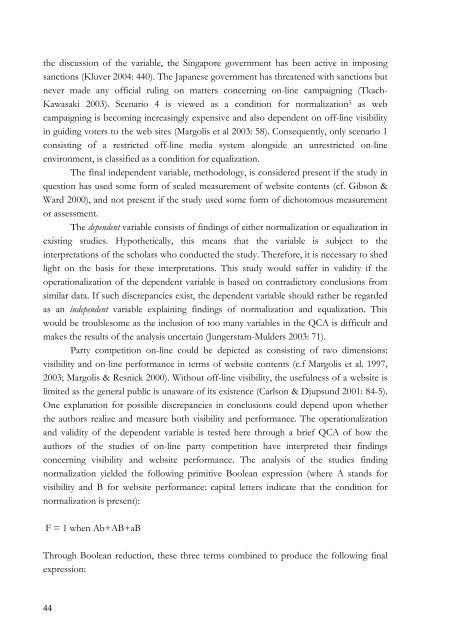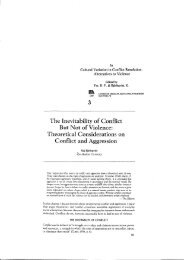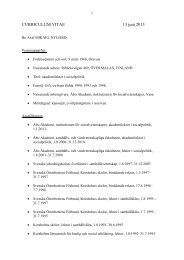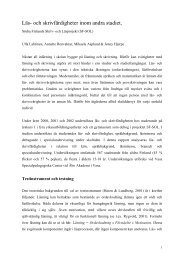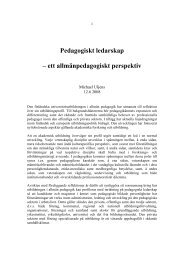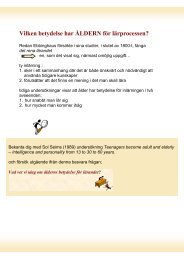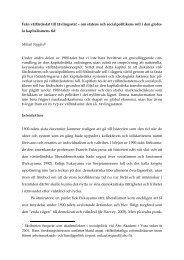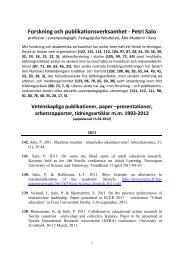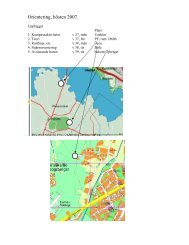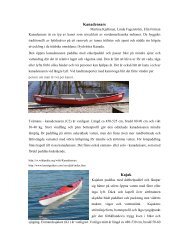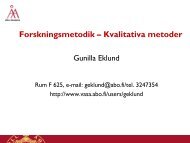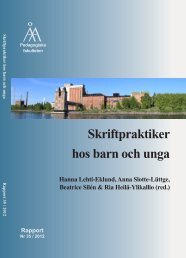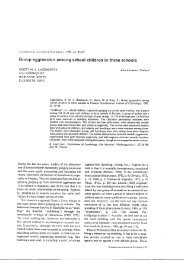Parties, Candidates and Citizens On-Line - Åbo Akademi
Parties, Candidates and Citizens On-Line - Åbo Akademi
Parties, Candidates and Citizens On-Line - Åbo Akademi
You also want an ePaper? Increase the reach of your titles
YUMPU automatically turns print PDFs into web optimized ePapers that Google loves.
the discussion of the variable, the Singapore government has been active in imposing<br />
sanctions (Kluver 2004: 440). The Japanese government has threatened with sanctions but<br />
never made any official ruling on matters concerning on-line campaigning (Tkach-<br />
Kawasaki 2003). Scenario 4 is viewed as a condition for normalization 5 as web<br />
campaigning is becoming increasingly expensive <strong>and</strong> also dependent on off-line visibility<br />
in guiding voters to the web sites (Margolis et al 2003: 58). Consequently, only scenario 1<br />
consisting of a restricted off-line media system alongside an unrestricted on-line<br />
environment, is classified as a condition for equalization.<br />
The final independent variable, methodology, is considered present if the study in<br />
question has used some form of scaled measurement of website contents (cf. Gibson &<br />
Ward 2000), <strong>and</strong> not present if the study used some form of dichotomous measurement<br />
or assessment.<br />
The dependent variable consists of findings of either normalization or equalization in<br />
existing studies. Hypothetically, this means that the variable is subject to the<br />
interpretations of the scholars who conducted the study. Therefore, it is necessary to shed<br />
light on the basis for these interpretations. This study would suffer in validity if the<br />
operationalization of the dependent variable is based on contradictory conclusions from<br />
similar data. If such discrepancies exist, the dependent variable should rather be regarded<br />
as an independent variable explaining findings of normalization <strong>and</strong> equalization. This<br />
would be troublesome as the inclusion of too many variables in the QCA is difficult <strong>and</strong><br />
makes the results of the analysis uncertain (Jungerstam-Mulders 2003: 71).<br />
Party competition on-line could be depicted as consisting of two dimensions:<br />
visibility <strong>and</strong> on-line performance in terms of website contents (c.f Margolis et al. 1997,<br />
2003; Margolis & Resnick 2000). Without off-line visibility, the usefulness of a website is<br />
limited as the general public is unaware of its existence (Carlson & Djupsund 2001: 84-5).<br />
<strong>On</strong>e explanation for possible discrepancies in conclusions could depend upon whether<br />
the authors realize <strong>and</strong> measure both visibility <strong>and</strong> performance. The operationalization<br />
<strong>and</strong> validity of the dependent variable is tested here through a brief QCA of how the<br />
authors of the studies of on-line party competition have interpreted their findings<br />
concerning visibility <strong>and</strong> website performance. The analysis of the studies finding<br />
normalization yielded the following primitive Boolean expression (where A st<strong>and</strong>s for<br />
visibility <strong>and</strong> B for website performance: capital letters indicate that the condition for<br />
normalization is present):<br />
F = 1 when Ab+AB+aB<br />
Through Boolean reduction, these three terms combined to produce the following final<br />
expression:<br />
44


